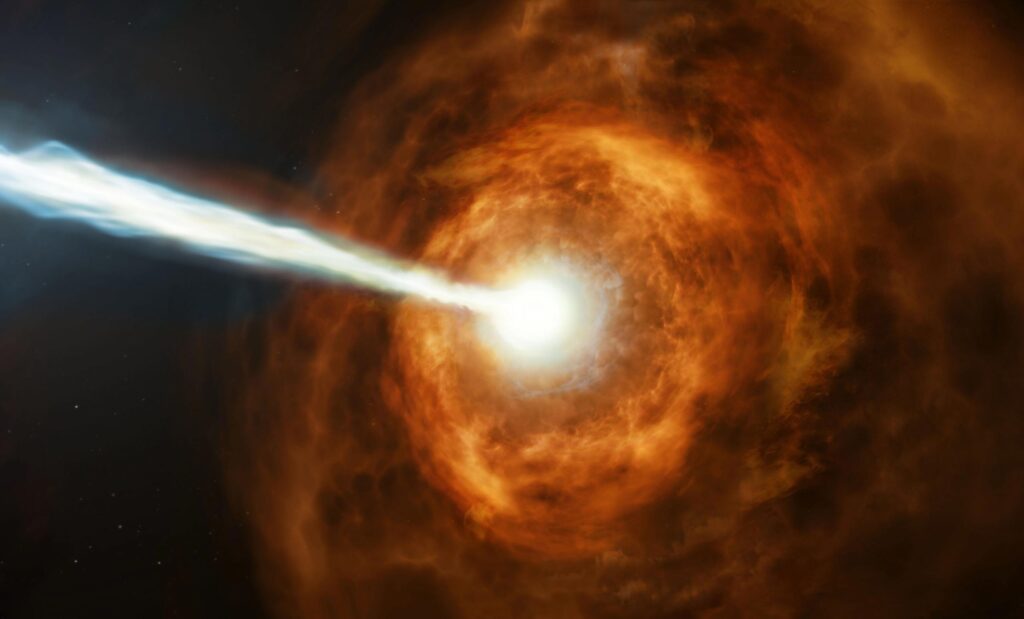Advancement in Developing Gamma Ray Lasers Utilizing Antimatter
The development of highly potent lasers for advanced technologies is drawing nearer.
Version 1: The process of generating high-energy gamma rays has been determined through a recent study. Physicist Allen Mills suggests the utilization of liquid helium to produce bubbles containing positronium, which is a combination involving antimatter. The development of gamma ray lasers holds the potential to revolutionize various fields such as space propulsion, medical imaging, and cancer treatment.

Scientists have made significant progress in controlling the most powerful form of light in the Universe. A physicist from the University of California has successfully achieved stability in positronium atoms, a breakthrough that could pave the way for the development of gamma ray lasers.
Gamma rays are a type of electromagnetic radiation that is emitted when atomic nuclei undergo radioactive decay. These rays possess the highest photon energy and are incredibly bright, albeit fleeting. Harnessing their immense power could revolutionize various industries and technologies, including spacecraft propulsion, advanced medical imaging, and cancer treatment.
The key to creating a gamma ray laser lies in manipulating positronium, an atom that consists of both matter and antimatter. Specifically, it is composed of electrons and their antiparticles called positrons. When a positron collides with an electron, it produces gamma ray photons.
In order to generate gamma-ray laser beams, the positronium atoms must be in a specific quantum state known as a Bose-Einstein condensate. Professor Allen Mills, from the Department of Physics and Astronomy at UC Riverside, has conducted a groundbreaking study demonstrating that hollow spherical bubbles filled with a gas of positronium atoms can be maintained in a stable state within liquid helium.
“My calculations show that a bubble in liquid helium containing a million atoms of positronium would have a number density six times that of ordinary air and would exist as a matter-antimatter Bose-Einstein condensate,” said Mills.
Mills believes that helium could serve as the stabilizing vessel due to its ability to transform into a liquid state at extremely low temperatures, effectively repelling positronium. This phenomenon arises from its adverse attraction to positronium, leading to the formation of bubbles that would generate the essential Bose-Einstein condensates.
COSMIC DEATH BEAMS: UNDERSTANDING GAMMA RAY BURSTS
The next objective for the Positron laboratory at UC Riverside, under the guidance of Mills, is to conduct experiments to validate these concepts and successfully set up an antimatter beam capable of generating bubbles in liquid helium.
“Near term results of our experiments could be the observation of positronium tunneling through a graphene sheet, which is impervious to all ordinary matter atoms, including helium, as well as the formation of a positronium atom laser beam with possible quantum computing applications,” explained the physicist.
Do not forget to share your opinion with us to provide you with the best posts !




0 Comments